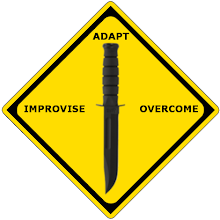SKIN DISEASES AND AILMENTS
Boils, fungal infections, and rashes rarely develop into a serious health problem. They cause discomfort and you should treat them as follows:
Boils
Apply warm compresses to bring the boil to a head. Another method that can be used to bring a boil to a head is the bottle suction method. Use an empty bottle that has been boiled in water. Place the opening of the bottle over the boil and seal the skin forming an airtight environment that will create a vacuum. This method will draw the pus to the skin surface when applied correctly. Then open the boil using a sterile knife, wire, needle, or similar item. Thoroughly clean out the pus using soap and water. Cover the boil site, checking it periodically to ensure no further infection develops.
Fungal Infections
Keep the skin clean and dry, and expose the infected area to as much sunlight as possible. Do not scratch the affected area. During the Southeast Asian conflict, soldiers used anti-fungal powders, lye soap, chlorine bleach, alcohol, vinegar, concentrated salt water, and iodine to treat fungal infections with varying degrees of success. As with any “unorthodox” method of treatment, use these with caution. Rashes
To treat a skin rash effectively, first determine what is causing it. This determination may be difficult even in the best of situations. Observe the following rules to treat rashes:
- If it is moist, keep it dry.
- If it is dry, keep it moist.
- Do not scratch it.
Use a compress of vinegar or tannic acid derived from tea or from boiling acorns or the bark of a hardwood tree to dry weeping rashes. Keep dry rashes moist by rubbing a small amount of rendered animal fat or grease on the affected area.
Remember, treat rashes as open wounds; clean and dress them daily. There are many substances available to survivors in the wild or in captivity for use as antiseptics to treat wounds. Follow the recommended guidance below:
- Iodine tablets - Use 5 to 15 tablets in a liter of water to produce a good rinse for wounds during healing.
- Garlic - Rub it on a wound or boil it to extract the oils and use the water to rinse the affected area.
- Salt water - Use 2 to 3 tablespoons per liter of water to kill bacteria.
- Bee honey - Use it straight or dissolved in water.
- Sphagnum moss - Found in boggy areas worldwide, it is a natural source of iodine. Use as a dressing.
- Sugar - Place directly on wound and remove thoroughly when it turns into a glazed and runny substance. Then reapply.
- Syrup - In extreme circumstances, some of the same benefits of honey and sugar can be realized with any high sugar- content item.
Labels: First Aid, Survival, Survival Medicine, Survival Skills

 Subscribe
Subscribe